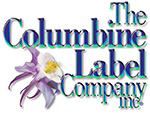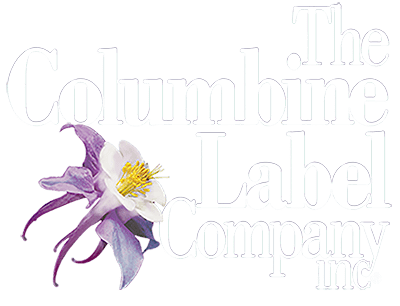PDF Label Proof vs. Physical label Proof
The method of emailing PDF files for approval of a label proof has been adopted by printers for decades. This method will show how art appears on a monitor, is universally accepted, and works great in many circumstances including re-prints or minor text revisions. Your printer should have systems in place to measure and track color and color consistency from run to run. However, there are limitations to proofing print jobs with digital PDF files.
Proof Label Color Output
The most common mistake seen in the print industry is art files that are built in the wrong format for the print method. RGB (red, green blue) files work for websites, online advertising, and essentially anything that will be viewed through a screen or monitor. An RGB file will not create the same output on physical print (even if printed using RGB colors). This is because the RGB format deals with the mixing of different colors of light, whereas the standard print format, CMYK (cyan, yellow, magenta, black), deals with the mixing of inks or toners. Converting from an RGB file to a CMYK file is not always a 1 to 1 swap. If the color does not convert well for printing in CMYK, the result could be a color that is washed out or even an unexpected shade. This is where press proofs come in! A physical press proof is a small run of your labels that is used to show the print color and quality that you can expect from an order.
1. Label Design Elements and Layers
It’s not unheard of for design elements to show up perfectly clear on-screen, yet not translate well to print. This could be due to many factors, including but not limited to RBG file format. Here is a small list of additional considerations:
- Color contrast that is too high or too low; too subtle or not subtle enough
- White ink layers are incorrect or missing (especially important when printing on silver or clear labels material)
- Corner radius – square-cornered elements might not look great on round-cornered labels
- Label fit to the actual container (a physical proof can be cut out and tested)
- Gradient – too low contrast or shows hard lines
- Print-to-print registration
- Background too dark or too light
- Missing elements due to missing fonts, i.e., barcodes and QR Codes
(Download this checklist to help you proof your next label proof)
2. Testing
With a press proof in hand, scanning barcodes and QR codes will provide definitive results. UPC codes and barcodes that do not scan properly can cause problems with retailers, leading to additional fees, or fines, but more importantly, can cost that premium shelf space you worked so hard to acquire.
3. Proof Label Orientation on Roll
One often overlooked specification of label printing is the direction the label comes off the roll; also known as the unwind direction {link to unwind direction chart}. This is particularly important for automatic label applications. Let’s just say life is so much easier when the unwind direction is correct. Everything just moves along as it should.
4. Final Chance to Proofread
The meaning “press-ready” implies that the files have previously been reviewed and are approved for the printing process. Press-ready files are not manipulated by the printer unless the request is made for specific changes. The reason your press-ready art file is proofed is to ensure your art file translates properly on our end. Take this time to check over your label with a fine-tooth comb. Customers have been known to catch these “opportunities”:
are not manipulated by the printer unless the request is made for specific changes. The reason your press-ready art file is proofed is to ensure your art file translates properly on our end. Take this time to check over your label with a fine-tooth comb. Customers have been known to catch these “opportunities”:
- Misspelled words
- Missing fonts
- Incorrect barcode
- Missing barcode
- Compare Alternate Materials
Art files are generally created on a white background with specifications to print on silver or clear material. The best attempt at simulating different backgrounds does not compare to the real thing. A physical proof will displace doubt and give you full confidence that your labels are exactly how you had imagined!
7. Removes Risk
Quality is a valid concern. Especially when using a new vendor or printing a new label. A physical proof will give you the confidence to know the labels you are waiting for are exactly what you expect them to be. Nothing removes risk like knowledge and confidence.
8. Save Money
A great print provider will stand behind their work when they make a mistake. However, when a digital PDF file is proofed and approved, or the mistake is in the provided art file, the chances of having to pay for a second print run are high. This is being said through experience and the deepest concern for all customers; It is true to your benefit to review a physical press proof.
9. Time-Saving
“There is never enough time to do it right, but there is always enough time to do it over.”
~ John W. Bergman


